- Home
- slideshows
- miscellaneous
- The ToneWoodAmp is the best $250 a guitarist can spend - here's why
The ToneWoodAmp is the best $250 a guitarist can spend - here's why
I don't own an acoustic-electric guitar. I have a 1970s-vintage Yamaha FG-170 that, believe it or not, I picked up at a yard sale for $5. I've played guitars that cost thousands of dollars, but this guy does it for me.

For players who don't own acoustic-electrics, ToneWoodAmp sells a package that includes a Fishman Neo-D humbucking pickup — a terrific pickup that was modified specifically for the ToneWoodAmp. This adds about $50 to the price.
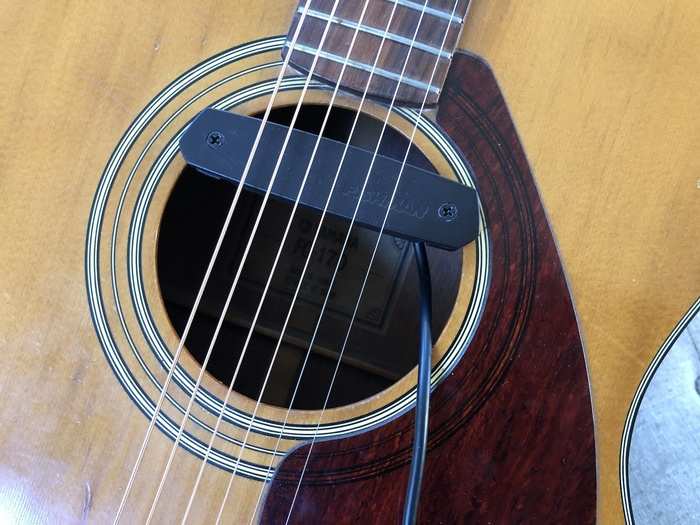
It's relatively simple to install the ToneWoodAmp. I'll run through it.
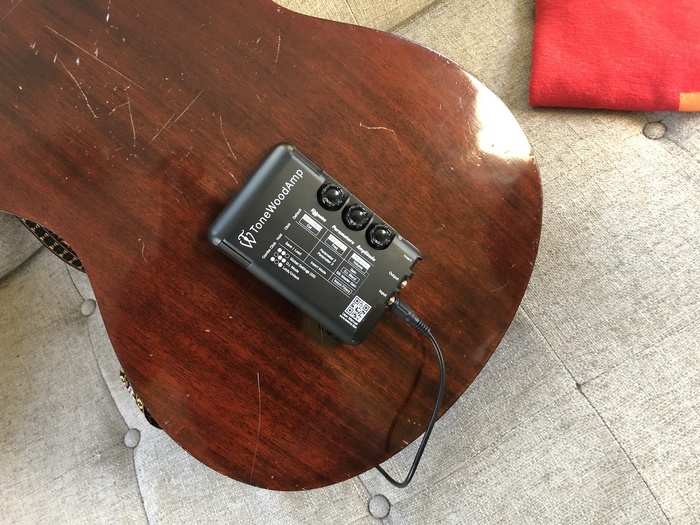
The package comes with a strong X-shaped magnetic brace. You loosen your strings and insert this thing into the guitar through the soundhole, then mate it to the amp, which attaches to the back of the guitar.
The brace comes with adhesive pads so that it doesn't shift around inside the guitar, but I found it wasn't entirely necessary to use them.
In my case, I attached the Fishman Neo-D to my Yamaha's soundhole and ran the pickup lead to the ToneWoodAmp. Obviously, if you want a more permanent solution, you can add an input jack.
The ToneWoodAmp runs on three AA batteries, its only weakness.
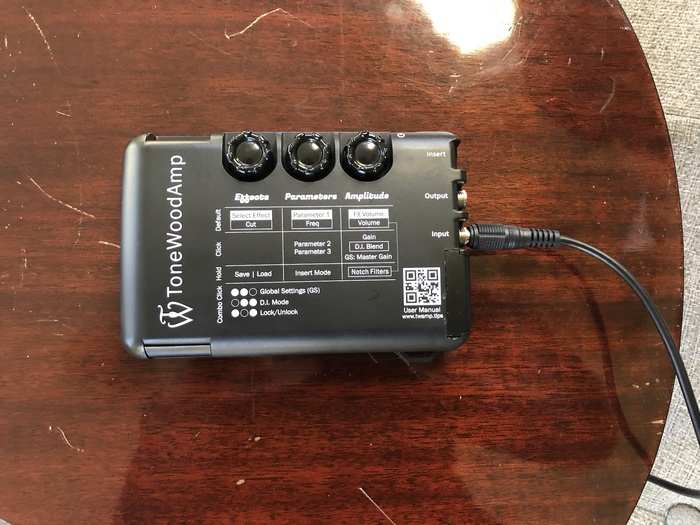
The device is generally fantastic, but it gobbles power. This isn't really a huge issue, as I was typically able to get a week or so out of each batch of AA batteries with near-constant playing. The design of the battery hatch, however, is problematic: it's hard to open and close. This is the only change I'd recommend for ToneWoodAmp 2.0.
The interface isn't entirely intuitive, but it's simple to use and offers a ton of versatility.
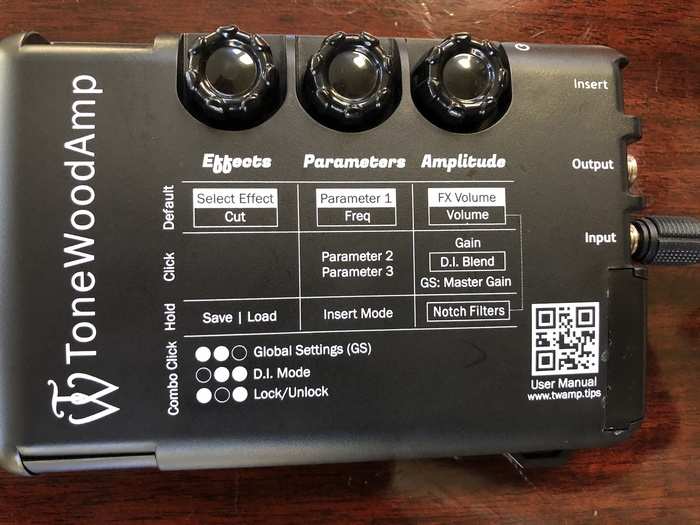
The interface uses three knob/buttons, plus a small screen. Once the unit is switched on, you can spin through the effects, adjust the effects' level and volume, and also tweak how the ToneWoodAmp interacts with other devices, an amp, or a sound system.
The ToneWoodAmp also functions as a DI and multi-effects processor.
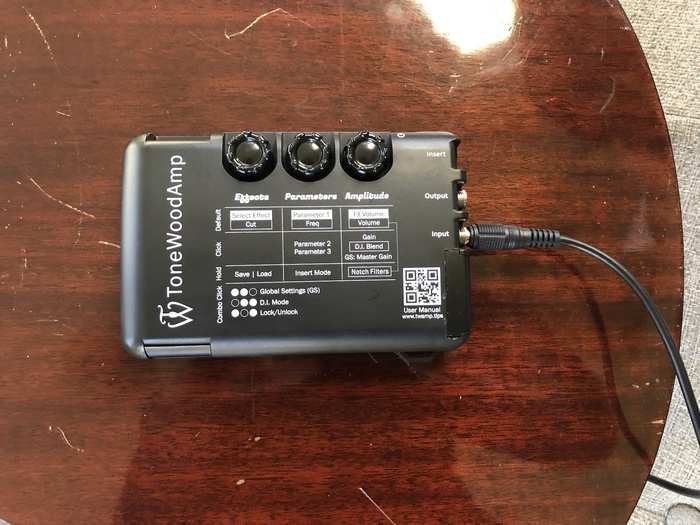
Putting the amp-less, pedal-free effects aside for a moment, when it comes to output, you can send a completely dry signal to an amp or a PA system, or you can output selected effects.
The effects are cool on their own and also great when run through an amplifier.
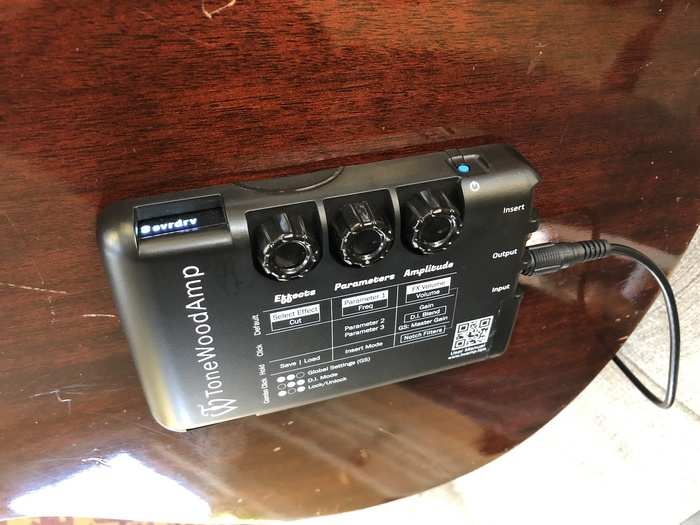
I didn't use the ToneWoodAmp with a PA, but I did run it through an amp, and the results were terrific, dry or wet.
Now, on to the effects and the un-amplified setup.
The range is impressive for such a modest and inexpensive unit. You have multiple types of reverb (three in all), delay, tremolo, a Leslie-speaker emulator, a wah effect, and my personal fave: distortion.
The intensity and volume of each effect can be turned up or down. And of course you can use these effects with an amp or a PA, or bypass them.
In an un-amplified setup, the ToneWoodAmp really does make an acoustic sound interesting. If you're performing a short set at a small, intimate venue or just playing for friends at home, the device allows you to really spice up the performance and avoid what can at times be that dreary, folk-song-y thing that acoustic players often struggle with.
I was able to go from light reverb on a fingerpicked number to dirty overdrive on a country rock tune with just a few quick spins of the ToneWoodAmp's knobs.
For $250, the ToneWoodAmp is one of the best purchases a guitarist can make.

I honestly can't imagine living without this little guy. I won't say it turned my Yamaha into something magical ... well, actually, I will say that. If a $300 investment can make a $5 yard sale axe sound like a Martin X-Series (an approximately $600-$1,000 outlay for a stupendous instrument), you owe it to yourself to spend the dough.
I'm not exactly a sophisticated acoustic guitarist, so in many ways I was leaving much of what the ToneWoodAmp could do on the table. Still, my blunt playing style benefits from effects, so on that score, I found the ToneWoodAmp to be a revelation.
Popular Right Now
Popular Keywords
Advertisement